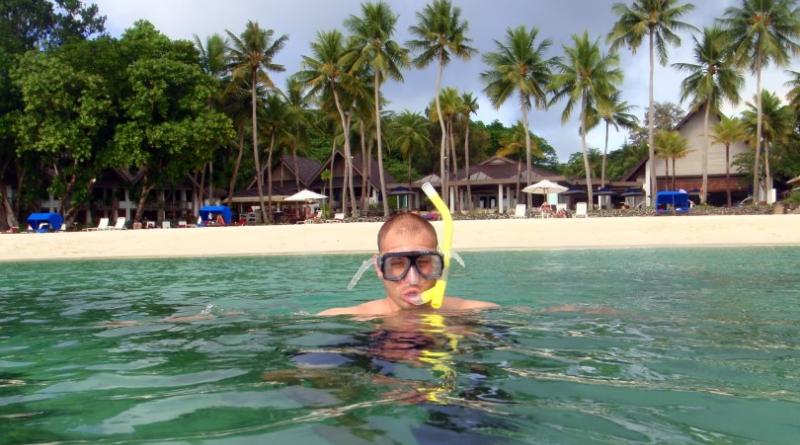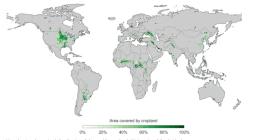Short hops and economy class: five expert tips on how to reduce your emissions on holiday

Across the Pacific, island nations are leaning into tourism to reboot their economies after the pandemic. But tourists cause significant greenhouse gas emissions and waves of waste: major threats to the islands.
Experts have advice on how tourists can limit those impacts on their holidays. They recognise while preventing the worst effects of climate change requires systemic change, individual impact still matters. And they believe that some small shifts in mindset can make a difference – without compromising a trip.
Closer the better
The most important decisions tourists make are where to go and how to travel.
“Travel closer to home,” says Apisalome Movono, senior lecturer of development studies at Massey University in New Zealand. “Don’t go to Europe, come to the Pacific.”
The closer the destination, the lower the emissions to get there. For tourists from Australia, it will be more environmentally-friendly to travel to New Caledonia than French Polynesia. A New Zealander, meanwhile, could opt to travel to the Cook Islands instead of Hawaii.
The cruise industry produces significant emissions; one 2019 study said on a daily basis, a cruise ship can have carbon footprint greater than 12,000 cars. “The monsters in the room are cruise ships,” says Movono. “These are the big emitters in our region.”
Tourists can also reduce their impact by choosing certain kinds of plane or by travelling economy class. The International Air Transport Association (Iata) has a useful calculator that compares the carbon impact of different journeys. Based on data shared by airlines, the calculator tracks the level of emissions output by model of aircraft, cargo, airplane configuration and whether a traveller goes economy or business class.
“When flying is unavoidable, travelling in economy class is far less carbon intensive than business class,” says Christian Schott, associate professor of tourism at Victoria University of Wellington.
That’s largely because business class passengers take up more space than those in economy, making flights less efficient. “For one person to travel in business class produces on average 3.5 times as many CO2 emissions than in economy class,” Schott says.
Do offset schemes work?
Many airlines and cruise companies now offer carbon offsetting for climate-conscious travellers. But the effectiveness of these schemes has been questioned. Analysis has shown many international carbon offset projects exaggerate their impact and underestimate potential harms.
Often, says Movono, “with the data coming out of these offsetting schemes, there’s no follow-up” to ensure that promised reductions are taking place. Accordingly, he says, the best way to reliably address travel emissions is to reduce them by taking fewer and shorter flights.
If tourists do use offsets, Movono encourages them to verify their reliability. Schott says visitors should seek out trusted local companies that give back to communities.
Minimise your footprint
Once a tourist has arrived in the Pacific, there are several ways to limit their footprint.
“I have a young family: I know big hotels are great and easy,” says Kalara McGregor, sustainability consultant and doctoral candidate in sustainable tourism at Griffith University. But she encourages tourists to consider hotels or smaller tourism operators that may not have “all the perks and treats of home,” like air conditioning, swimming pools, or hot showers, all of which consume large amounts of energy and water.
For many tourists, cutting out those amenities may be a stretch. Movono points to other indulgences that are easier to eliminate, like imported food, which create significant emissions when flown or shipped in.
“Try out the local cuisine,” he says. “I find it irritating when someone comes all the way from New Zealand [to a Pacific island] to enjoy a lamb shank from New Zealand.”
Schott says tourists can look to avoid taxis or hiring cars, which significantly increase their environmental footprint. Many islands are small enough to travel around by foot or bike, while larger islands often have effective travel alternatives that give tourists a more authentic experience.
“In Vanuatu, there’s shared taxis. You might share the taxi with five or six other people, but it’s a much more sustainable way of getting around,” says Schott. Meanwhile, “In Fiji they’ve got great buses going around many of the large islands.”
Be more mindful of waste
Many Pacific Islands are battling to control waste. Given their size, there are few places to dispose of this garbage. Since they have to import so many goods, the flow of rubbish continues to grow.
“That waste problem is a huge issue,” says McGregor. “But the assumption is that’s what the tourist wants, so we’ve got to provide that.”
As a result, she says, “tourists need to be open to not having everything wrapped in plastic, and asking for water bubblers (and) … locally made handicrafts over cheap imported trinkets.”
Most of all, McGregor encourages tourists to be proactive about what they use and throw away. “Do you really need to have twenty bottles of water today, or could you just bring a water bottle?”
Make it count
Fundamentally, emphasises Movono, all tourism causes emissions. “To give advice about being environmentally conscious is a bit of an oxymoron,” he says of tourists. Given that, he encourages travellers to focus on maximising the economic benefit from their carbon impact.
As an example, he encourages tourists to “look beyond Denarau”, a major Fijian resort. By supporting locally owned tourism operators, who are more likely to use local staff and supplies, or travelling to less-frequented places like Fiji’s Vanua Levu island, tourists “are putting money into people’s pockets,” says Movono, “because the economy is more circular.”
“You’ve taken a big journey and generated those emissions to get there,” agrees McGregor. “Once you’re there, it’s more that mindset shift of: what can I do to give back?”





